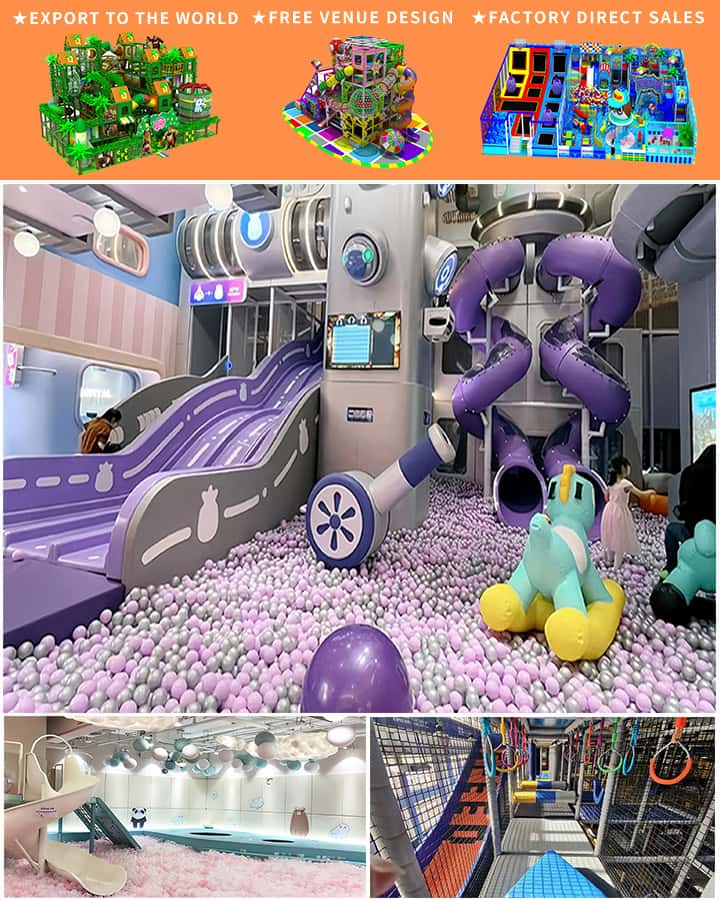Opening an indoor playground business can be a rewarding venture that provides endless fun for children while offering a profitable opportunity for entrepreneurs. However, like any business, it requires careful planning, strategic decision-making, and diligent execution. Here is a step-by-step guide on how to open an indoor playground business:
1. Conduct Market Research
Before diving into the business, it’s essential to understand the local market conditions. Identify the demand for indoor playgrounds in your area by researching demographics, competition, and potential customer base. Visit existing indoor playgrounds to observe what they offer and identify gaps in the market that your business could fill.
Steps for Effective Market Research:
- Survey Potential Customers: Engage with parents and guardians to learn about their preferences and expectations.
- Analyze Competitors: Study your competitors’ strengths and weaknesses to identify unique selling points for your business.
- Evaluate Location: Choose a location with high foot traffic and accessibility to maximize visibility and convenience for your customers.
2. Create a Business Plan
A well-structured business plan will serve as the blueprint for your indoor playground business. It should include an executive summary, market analysis, organizational structure, service description, marketing strategy, operational plan, and financial projections.
Key Elements of a Business Plan:
- Executive Summary: A brief overview of your business idea and goals.
- Market Analysis: Insights on market size, target audience, and competitive landscape.
- Financial Plan: Detailed projections on startup costs, revenue streams, and break-even analysis.
- Operational Plan: Day-to-day management strategies, staffing needs, and supplier relationships.
3. Secure Financing
Starting an indoor playground business involves significant upfront investment. Calculate the total cost required and explore various financing options such as personal savings, bank loans, investors, or crowdfunding.
Financial Considerations:
- Initial Investment: Include costs for leasing or purchasing a space, renovation, play equipment, safety measures, and initial marketing campaigns.
- Operational Costs: Plan for ongoing expenses like rent, utilities, salaries, maintenance, and inventory.

- Contingency Fund: Set aside a portion of your budget to handle unexpected expenses or downturns in business.
4. Choose the Right Location
Selecting an appropriate location is critical for the success of your indoor playground. The site should be easily accessible, visible from major roads, and situated in areas frequented by families.
Factors to Consider:
- Visibility and Accessibility: High foot traffic areas near shopping centers, residential neighborhoods, or family hubs can boost visibility.
- Space Requirements: Ensure the venue has enough square footage to accommodate various attractions and maintain a safe environment.
- Zoning Regulations: Check local zoning laws to ensure commercial use is permitted.
5. Obtain Legal Requirements and Permits
Compliance with legal requirements is crucial to avoid penalties and ensure the safety of your patrons. This may involve obtaining business licenses, health and safety permits, and insurance.
Legal Steps:
- Business Licensing: Register your business with the local government and obtain necessary permits.
- Insurance: Acquire general liability insurance and other relevant policies to protect against accidents and injuries.
- Safety Certifications: Ensure all play equipment meets national safety standards and regulations.
6. Design the Play Area
Creating an inviting and safe play environment is key to attracting and retaining customers. Invest in high-quality, age-appropriate play equipment and ensure the layout encourages free movement and exploration.
Design Tips:
- Diverse Equipment: Incorporate a variety of attractions such as slides, climbing structures, ball pits, interactive games, and themed areas.
- Safety First: Use soft flooring materials, secure fixtures, and ensure adequate supervision areas.
- Cleanliness: Maintain a strict cleaning schedule to keep the facility hygienic and welcoming.
7. Hire Qualified Staff
Employ friendly, responsible, and trained staff to enhance the customer experience and ensure smooth operations. Provide comprehensive training on safety protocols, customer service, and emergency procedures.
Staffing Needs:
- Play Supervisors: Oversee the safety of children at play.
- Customer Service Representatives: Greet visitors, manage bookings, and handle inquiries.
- Maintenance Staff: Keep the facility in top condition and promptly address any issues.
8. Develop a Marketing Strategy
Create a robust marketing plan to promote your indoor playground and attract customers. Utilize social media, local advertising, partnerships, and community events to spread the word and draw in visitors.
Marketing Tactics:
- Online Presence: Develop a user-friendly website and active social media profiles to showcase your offerings.
- Local Advertising: Use flyers, posters, and sponsorship of local events to increase visibility.
- Promotions: Offer introductory discounts, loyalty programs, and special event packages to entice repeat visits.
9. Monitor and Adapt
After launching your indoor playground, regularly assess its performance and make adjustments as needed. Gather feedback from customers, track financial metrics, and stay updated on industry trends to continually improve your business.
Ongoing Management:
- Customer Feedback: Actively seek and act upon reviews and suggestions.
- Financial Monitoring: Keep a close eye on revenue streams and expenses to ensure profitability.
- Innovation: Periodically update equipment and introduce new attractions to keep the experience fresh and exciting for visitors.
Conclusion
Opening an indoor playground business involves a combination of strategic planning, meticulous preparation, and dedicated management. By conducting thorough market research, securing adequate financing, ensuring compliance with legal requirements, creating a safe and engaging environment, hiring qualified staff, and implementing effective marketing strategies, you can build a successful indoor playground that delights children and generates substantial returns for years to come




